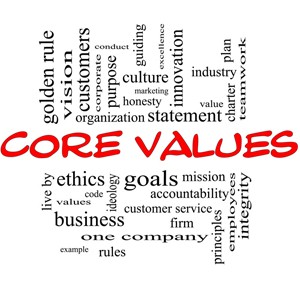 Recently there was a fascinating panel discussion on Radio National about “Business culture versus strategy“. Although the title mentioned business, panel members represented community organisations and services as well. And, as Neil Carrington (one of the panel members) commented, they see themselves as not for loss rather than not for profit because without the margin there is no mission.
Recently there was a fascinating panel discussion on Radio National about “Business culture versus strategy“. Although the title mentioned business, panel members represented community organisations and services as well. And, as Neil Carrington (one of the panel members) commented, they see themselves as not for loss rather than not for profit because without the margin there is no mission.
The conversation was moderated by Karina Carvalhom, Presenter of ABC News Queensland, and the panel members were:
- Dr Neil Carrington, CEO of the charity ACT for Kids
- Li Cunxin, Artistic director of the Queensland Ballet
- Beth Winchester, Executive General Manager Human Resources with Fuji Xerox Australia
- Rob Kent, Managing partner of the advertising agency Publicis Mojo
- Dr John O’Donnell, CEO of Mater Health Services
 The group talked about which is more important, culture or strategy. And although at one point Neil Carrington wanted ‘fifty cents each way‘ on the question … :) … the overall conclusion was that an organisation’s culture is the most important – and your first strategy is to ensure you have a strong and positive culture.
The group talked about which is more important, culture or strategy. And although at one point Neil Carrington wanted ‘fifty cents each way‘ on the question … :) … the overall conclusion was that an organisation’s culture is the most important – and your first strategy is to ensure you have a strong and positive culture.
Here are just a few of the key points we picked up from the conversation:
- Creating a strong culture in a large organisation is challenging, but the simplest answer is to break your people into smaller teams – break the larger entity ‘into bite sized pieces‘ – but under the umbrella of the whole organisation’s unified culture. Each team will of course have its own culture. You need to make the unified culture more apparent than the tribal cultures of the different teams.
- The number one requirement for a positive culture is leadership – but leaders who are also prepared not to take themselves too seriously and who have ‘a healthy outlook on the realities of life‘.
- Everyone needs to have a sense of ownership. As a leader it is crucial to bring everyone on the journey and share the enthusiasm.
- Many people think those in leadership watch the staff, but the reverse is true. Your people watch you. So it’s crucial to model the culture, behaviours and values that you want your organisation to espouse.
- Conflict is an important part of the process – you need robust disagreement and challenge for creative growth. As one panel member commented, if as a leader you say you and your people are always in agreement, then it’s time to ‘sign your resignation letter‘. :) Don’t confuse agreement with alignment. Reaching the best decision involves disagreement – but when a decision is made, you align behind that decision, based on your values and culture.
- If you have the right culture, you will attract the right people.
- A positive culture doesn’t just happen – it takes time and it’s a lot of work.
- Communication is “absolutely pivotal in the whole process”. It’s also important to celebrate the achievements of the staff on a regular basis.
- And, as John O’Donell commented: Culture is ‘what you walk past as a leader’ – it’s what you permit, what you allow. So setting a standard and being seen to adhere to that standard and demand it of others is an important ingredient in setting a culture and then maintaining it over time.
 Not one of these things is rocket science really. Much of what was discussed affirms what might be called ‘common sense’ in relation to human nature and the nature of organisations. But you know what they say about ‘common’ sense being not so common … :)
Not one of these things is rocket science really. Much of what was discussed affirms what might be called ‘common sense’ in relation to human nature and the nature of organisations. But you know what they say about ‘common’ sense being not so common … :)
Do listen to the recording. It goes for about 50 minutes – including a handful of audience questions and panel responses at the end. But we believe you’ll find it’s time well spent! :)
 Our monthly newsletter
Our monthly newsletter
I’m positive there’s a strong relation between culture and strategy. The root cause of a successful strategy is a strong culture that’s composed of values and practices with which people are committed. These values and practices are to be “managed” in order to guide organizational behavior towards strategic goals.
Universal values such as honesty or responsibility are just minimal requirements to get into a job, they cannot be held as key factors that differentiate an organizational culture.
Hi Carlos .. many thanks for your thoughts on this. And I agree completely! Though with the additional comment that, even more importantly than simply managing the values, leaders need to model them and ensure they are not just words in some glossy organisational booklet or strategic plan but are lived and demonstrated on a daily basis. Without attention to this aspect, I think that often (just like organisational mission statements) espoused values can become “just words” rather than a true expression of what actually happens day to day within the organisation and its staff. In simple terms, and to use an old cliche that is nevertheless still true, they need to “walk their talk”.:)